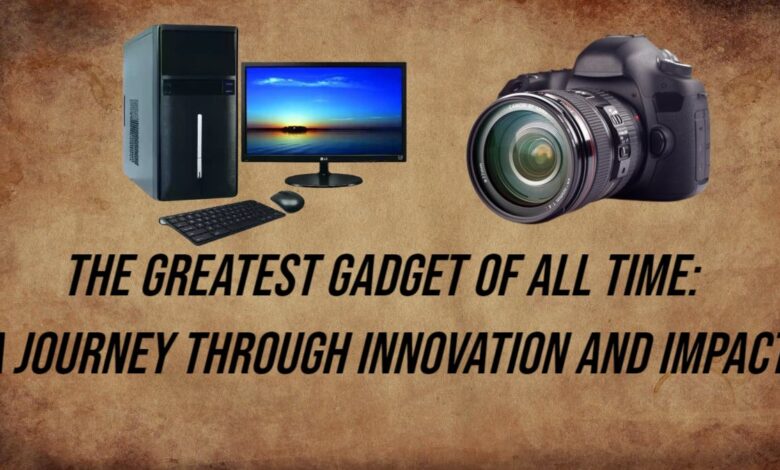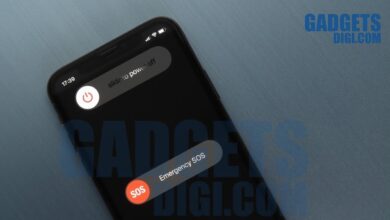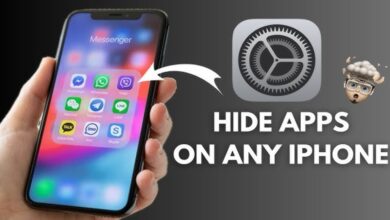The Greatest Gadget of All Time: A Journey Through Innovation and Impact

In a world that thrives on technology, gadgets have become an inseparable part of our daily lives. From communication and entertainment to health and productivity, the right gadgets can transform how we experience the world. The term “gadget” itself refers to any mechanical or electronic device, often novel, that is designed to make a particular task easier or more efficient. But when posed with the question, **”What is the greatest gadget of all time?”**, it invites a broader discussion that transcends individual preferences, diving deep into history, innovation, and global impact.
Many contenders vie for the title of the greatest gadget of all time, including iconic inventions like the **smartphone**, the **personal computer**, and the **television**. However, the clear frontrunner—the one that has revolutionized communication, reshaped entire industries, and become indispensable to modern life—is **the smartphone**.
The Birth of the Smartphone: A Revolutionary Moment
When we think of gadgets that have changed the course of human history, the smartphone stands tall. Its inception can be traced back to 1992, with IBM’s “Simon Personal Communicator,” often regarded as the world’s first smartphone. Yet, it wasn’t until the launch of Apple’s **iPhone in 2007** that the smartphone became a cultural and technological phenomenon.
The smartphone represented a convergence of multiple technologies: the telephone, camera, GPS, music player, and a handheld computer. With the introduction of touchscreens, mobile apps, and high-speed internet, smartphones took over nearly every facet of communication and entertainment. What once required separate devices—such as calculators, cameras, and even televisions—could now be done seamlessly on a single, portable device.
Why the Smartphone is the Greatest Gadget
1. Ubiquity and Global Impact
The smartphone is ubiquitous. As of 2024, over **6.92 billion** people worldwide own smartphones. This level of penetration means that nearly 90% of the global population uses this single gadget daily. The sheer ubiquity of the smartphone has made it a central tool in education, business, social interaction, and more.
Developing countries, in particular, have benefitted enormously from smartphones. In places where infrastructure is limited, smartphones provide access to information, education, banking, and healthcare. For example, mobile banking applications in countries like Kenya (with M-Pesa) have enabled financial inclusion for millions who lacked access to traditional banking services.
2. Versatility and Functionality
The defining characteristic of a smartphone is its ability to perform a multitude of tasks. A gadget is often judged by its functionality, and the smartphone excels here, offering countless possibilities through apps. Users can browse the internet, send emails, capture high-definition photos and videos, navigate unfamiliar cities with GPS, listen to music, play games, and even manage their health with fitness trackers—all in one device.
Smartphones have transformed industries such as journalism, where breaking news can now be captured by anyone with a phone. They’ve disrupted traditional business models—think of the shift from physical stores to e-commerce via mobile apps like Amazon or social media advertising on platforms like Instagram. Smartphones are not just tools; they are platforms for other gadgets, services, and experiences.
3. Communication and Connectivity
At its core, the smartphone’s primary function is communication. It has bridged distances that once seemed insurmountable. Whether through calls, texts, video conferencing, or social media, smartphones keep people connected regardless of geography. The smartphone plays a crucial role in maintaining social connections, which became especially clear during events like the global COVID-19 pandemic, where video calls on platforms like Zoom replaced physical interactions.
From sending a quick message to collaborating on a project with someone across the globe, smartphones have fundamentally altered how we interact with each other. This real-time communication extends to businesses as well, enabling global trade, remote work, and collaboration across time zones.
4. Personalized Technology: The Rise of Apps
The introduction of the App Store in 2008 created an ecosystem that further solidified the smartphone’s role as the greatest gadget. With over **4 million apps** available across Android and iOS platforms, the smartphone becomes whatever the user needs it to be: a personal assistant, a financial planner, a fitness coach, or even a language tutor. These apps provide unprecedented levels of personalization and functionality, allowing users to tailor their devices to fit their exact needs.
For instance, apps like WhatsApp and WeChat allow free, instant messaging and calling worldwide, while platforms like Instagram and TikTok have transformed content creation and consumption. No other gadget in history has had this level of flexibility and adaptability to serve personal, social, and business needs.
Other Contenders for the Greatest Gadget of All Time
While the smartphone stands atop the heap, other gadgets deserve honorable mentions, each shaping history in its own way.
1. The Personal Computer (PC)
The personal computer, particularly after the introduction of the Apple II and later the IBM PC, marked the beginning of the digital age. PCs revolutionized workplaces, schools, and homes by giving individuals and businesses the power to compute, analyze data, and create content on a scale that was previously unimaginable. Without the PC, much of the software and infrastructure that powers smartphones today wouldn’t exist.
2. The Television
The television, especially in the 20th century, transformed entertainment and the spread of information. TV sets became windows to the world, broadcasting news, sports, and entertainment into millions of homes. The television was the precursor to the modern streaming services accessible on smartphones today and laid the foundation for the visual media consumption culture we now live in.
3. The Wristwatch
In its simpler form, the wristwatch is an iconic gadget. However, with the advent of **smartwatches** like the Apple Watch, this gadget has evolved into a powerful tool for fitness, communication, and health monitoring. Smartwatches now serve as companions to smartphones, enabling users to track health metrics, receive notifications, and even make payments.
4. The Camera
From early film cameras to digital cameras, this gadget has enabled us to capture memories and tell visual stories. Today, the smartphone camera is a marvel of engineering, making professional-quality photography accessible to the masses. Many photographers now rely on their phones as their primary camera, proving how far we’ve come from bulky, specialized devices.
The Future of Gadgets: What’s Next?
While the smartphone remains the greatest gadget of our time, technological advancements continue to push the boundaries of what’s possible. Augmented reality (AR) and virtual reality (VR) devices, wearable technology, and advancements in artificial intelligence hint at a future filled with even more groundbreaking gadgets. The Internet of Things (IoT) is rapidly creating a world where all devices, from refrigerators to cars, are interconnected, creating new opportunities for convenience and efficiency.
Gadgets like **smart glasses** may become the next evolution, blending augmented reality with everyday tasks. Similarly, **quantum computers** could redefine computing on a massive scale, unlocking new potentials in science, medicine, and artificial intelligence.
Conclusion
While the world has witnessed the invention of countless gadgets that have revolutionized daily life, the **smartphone** undeniably takes the crown as the greatest gadget of all time. Its versatility, global impact, and capacity to serve as a platform for an infinite number of applications make it unmatched in scope and influence. From transforming communication to enhancing productivity and democratizing access to information, the smartphone has become more than just a tool—it is a symbol of the digital age.
As technology advances, it will be fascinating to see how gadgets evolve and what innovations will challenge the smartphone’s reign. But for now, it remains the most powerful and transformative gadget ever created, shaping not only our present but also our future.




